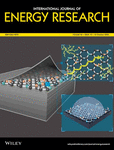Life cycle assessment as a comparison tool for activated carbon preparations and biomethane storage for vehicular applications
Summary
The term “future material” is referred for activated carbons (AC) due to their easy/scalable preparation, compatible property, and numerous applications. The applications of such materials for gas adsorption and storage play a vital role in the large-scale feasibility of adsorbed gas storage. This could provide a better alternative to compression-based storage for vehicular applications due to lower energy and materials input. Currently, compression-based storage has been thoroughly studied and widely used; however, there are limited reports on LCA. In this paper, a lifecycle-based approach has been deployed for chemically activated carbon (CAC) production using KOH and compared with inventory-based physically activated carbon (PAC). The PACs have a far lesser impact than the CACs mainly owing to the chemicals used. Potassium hydroxide and electricity account for nearly 70 to 90% of different ecotoxicity indicators. It has also been estimated that if by-products generated using chemicals are recovered, the midpoint and endpoint impacts can be brought down substantially up to 60%. In particular, Terrestrial ecotoxicity is reduced by 80%, Human toxicity up to 60%, and Water toxicity up to 60%. However, the CACs/CACRs still have higher impact than the PACs, mainly on four indicators. Their application for methane-rich gas storage derived from a life cycle study encourages adsorption-based storage adoption. The metal requirement for cylinder manufacturing is the highest which can be reduced if adsorption-based storage is adopted. Therefore, the sustainability of the proposed novel process is increased with incorporation of biomass-based activated carbons, reduction in thickness of cylinders, and lower pressure requirement for storage. It has been observed that Global warming potential due to the cylinder for gas storage is drastically reduced from 73% to 15.6%. The process of activation and application of ACs for gas storage has been investigated using life cycle as an assessment tool.
Open Research
DATA AVAILABILITY STATEMENT
Data sharing is not applicable to this article as no new data were created or analyzed in this study.




